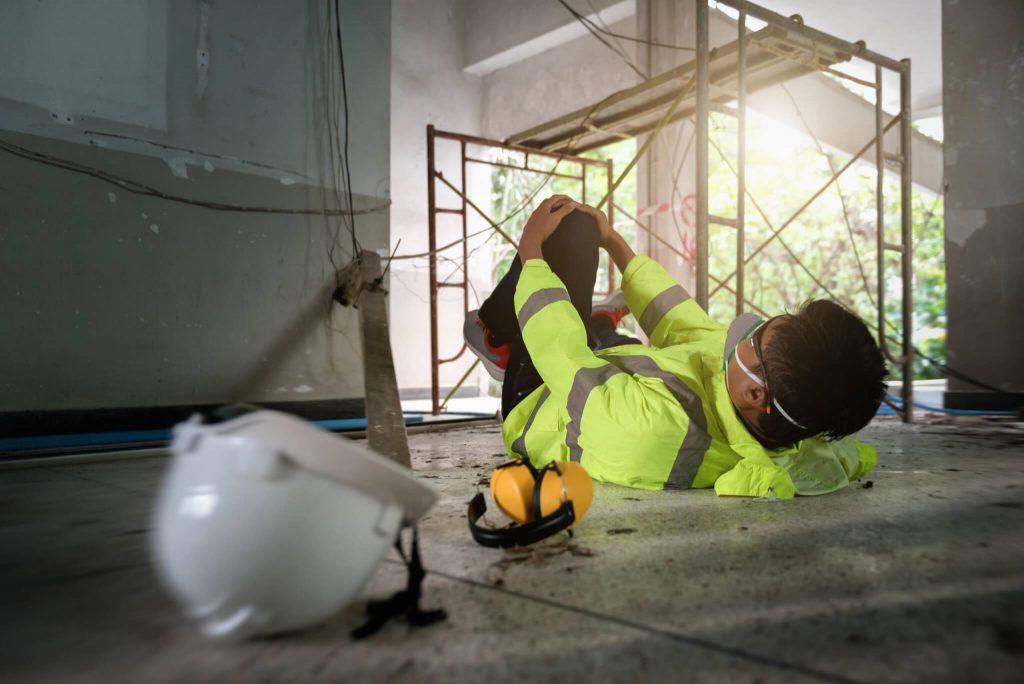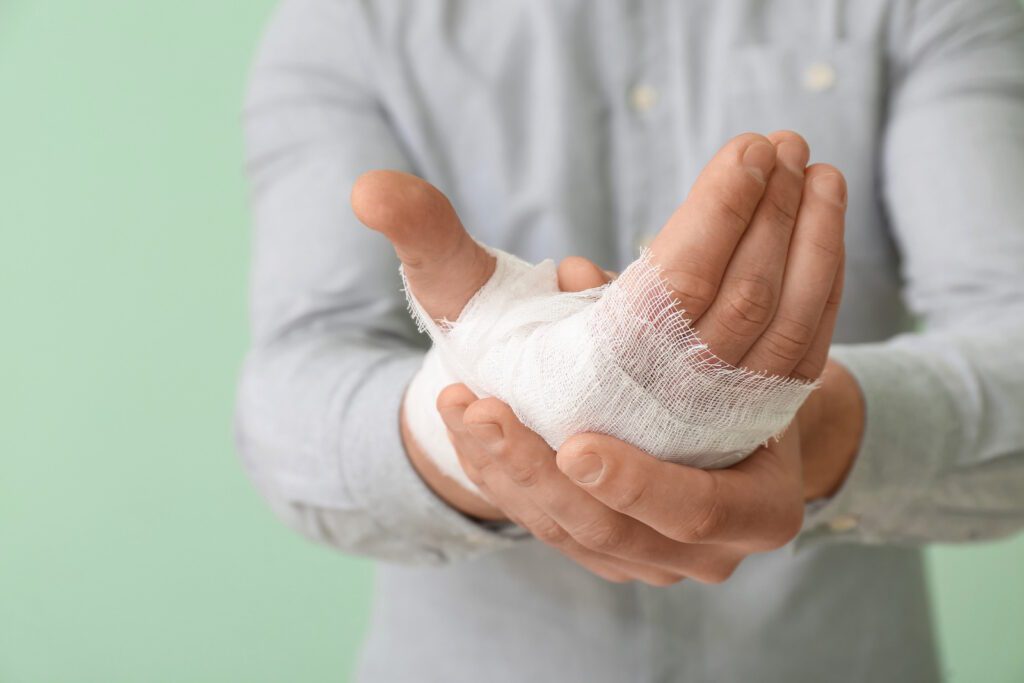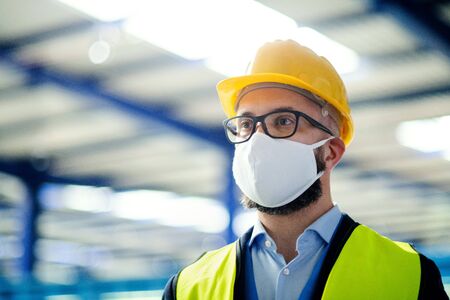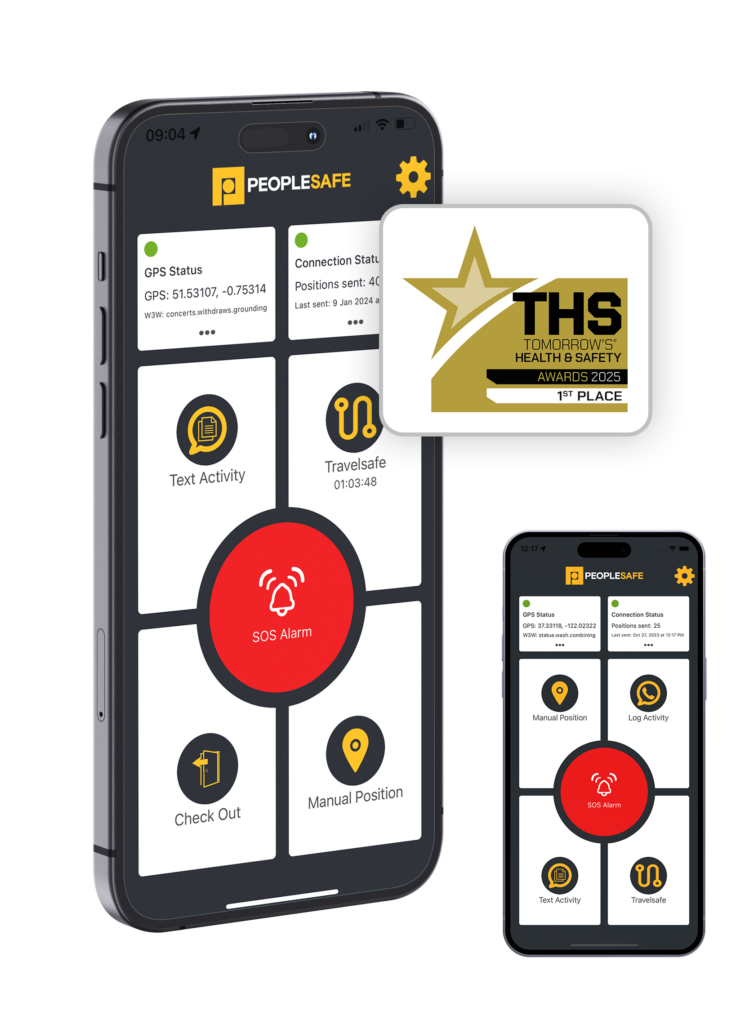10 of the Most Common Workplace Injuries
Workplace safety is crucial for every business, yet injuries remain common. These incidents not only affect employee wellbeing, but also impact productivity and financial stability.
Here, we outline ten common workplace injuries that could affect lone workers or large teams. From slips and falls to electrical hazards, and provide practical advice on how to avoid them. Understanding these risks and implementing preventative measures can significantly reduce accidents and create a safer working environment for everyone.
1. Slips, Trips and Falls
Slips, trips and falls are among the most frequent causes of workplace injuries. They can happen anywhere, from office spaces to construction sites, often leading to serious harm.
Causes include wet or uneven flooring, cluttered work areas, and inadequate lighting. To prevent these accidents, employers should ensure that workspaces are well-lit and free of clutter. Floors should be cleaned regularly, and any spills should be promptly addressed.
Employees can have additional protection by carrying a personal safety app or device with fall detection. This technology can sense when someone has fallen and automatically raise an SOS alarm so the person can access help if they are working alone and potentially incapacitated.
Explore Fall Detection
2. Muscle Strains
Muscle strains, especially in the back and neck, are common injuries that occur when lifting heavy objects or due to poor posture over time. Such strains can lead to significant discomfort and time off work.
To avoid these injuries, it’s important to use proper lifting techniques: bend at the knees, keep the back straight, and avoid twisting or bending while lifting. Workplaces should provide training on these techniques and consider ergonomic improvements to the working environment.
Additionally, employees should be encouraged to take regular breaks and perform stretches or light exercises to reduce the risk of muscle strain.

Impact Injuries
Impact injuries occur when an individual is struck by an object or when they run into something, leading to bruises, fractures, or even more serious harm. These incidents often happen because of falling objects, moving machinery, or when carrying out tasks without paying attention to the surroundings.
To prevent such injuries, employers should keep work areas tidy and ensure that heavy objects are stored securely. Employers should also enforce the use of protective gear like helmets and safety goggles where necessary.
Awareness and training are key; employees should always be aware of their environment, especially when working near potentially dangerous machinery, or in areas where items might fall.

4. Repetitive Strain Injury (RSI)
Repetitive strain injury (RSI) is caused by overuse of a particular part of the body, often due to repetitive tasks, awkward positions, or maintaining the same posture for extended periods. Common in office environments where typing and mouse use are frequent, RSI can also affect workers in manufacturing, assembly lines, and other sectors requiring repetitive motions.
Prevention includes ergonomic assessments of workstations, promoting the use of suitable equipment like ergonomic keyboards and chairs, and encouraging regular breaks to stretch and move around.
Employers should provide training on correct posture and techniques to reduce the risk of RSI, highlighting the importance of varying tasks throughout the day when possible.

5. Cuts and Lacerations
Cuts and lacerations are common in workplaces that involve handling sharp tools or machinery, such as kitchens, workshops and manufacturing plants. These injuries can range from minor cuts to severe wounds requiring medical attention.
To prevent such incidents, employees should be trained on the proper use and handling of sharp objects and machinery. Employers should ensure that safety protocols are in place, including the provision of protective gear like gloves and arm guards. Regular maintenance and inspection of equipment are also needed to prevent malfunctions that could lead to cuts.
Additionally, keeping work areas clean and free from unnecessary clutter can reduce the risk of accidents involving sharp objects.

6. Inhalation Hazards
In workplaces with exposure to dust, fumes, vapours or hazardous substances, inhalation hazards pose a significant risk to health. Prolonged exposure can lead to respiratory issues, chronic illnesses or acute poisoning.
To combat these dangers, it’s critical to ensure proper ventilation in work areas and use air filtration systems where necessary. Employers must provide appropriate respiratory protection, such as masks or respirators, and ensure they are used correctly. Regular training on the risks associated with hazardous substances and how to handle them safely is essential. Employees should also be encouraged to report any ventilation issues or equipment malfunctions immediately.

7. Noise-Induced Hearing Loss
Prolonged exposure to high noise levels in the workplace can lead to noise-induced hearing loss, a permanent and preventable condition. This is a common issue in industries such as manufacturing and construction.
To prevent this type of injury, employers should conduct regular noise assessments and control exposure by implementing engineering controls, such as sound-dampening systems, or enclosing noisy machinery. Providing personal protective equipment, like earplugs or earmuffs, is also necessary, alongside training employees on their correct use and the importance of hearing conservation.
Additionally, establishing designated quiet zones and noise rotation schedules can help minimise exposure and protect employees’ hearing.

8. Burns
Burn injuries in the workplace can occur from direct contact with flames, hot surfaces, chemicals or electrical sources. Such injuries are particularly common in kitchens, laboratories and industrial settings.
To prevent burns, it’s essential to enforce safety protocols when handling hot substances or working near heat sources. Employers should provide appropriate personal protective equipment, such as heat-resistant gloves and aprons, and ensure that employees are trained on how to use them correctly. Regular maintenance and safety checks on equipment can prevent overheating and malfunctions.
Emergency procedures should be clearly communicated to all employees, including the immediate steps to take in case of a burn injury.

9. Eye Injuries
Eye injuries in the workplace can result from exposure to hazardous chemicals, flying debris, or intense light, leading to temporary or permanent vision impairment. These incidents are prevalent in environments where welding, chemical handling, or the use of power tools occurs.
To prevent such injuries, protective eyewear such as safety goggles or face shields must be worn at all times in hazardous areas. Employers should enforce strict policies regarding eye protection and provide training on the risks and proper use of protective equipment. Regular inspections and maintenance of machinery that could pose a risk to the eyes are also essential to ensure safety measures are effective and up to date.

10. Electrical Injuries
Electrical injuries, including shocks, burns and electrocution, can occur in any workplace where electricity is used, not just in high-risk environments like construction sites or electrical maintenance areas. These injuries can result from direct contact with live parts, faulty equipment, or improper use of electrical devices.
To prevent electrical injuries, employers should ensure that all electrical installations comply with safety standards and are regularly inspected. Employees should be trained on the safe handling of electrical equipment and the importance of reporting any faults immediately. The use of protective equipment, such as insulated gloves and mats, should be mandated where necessary, and clear signage should be placed near potential electrical hazards to remind employees of the risks and safety practices.

Personal Safety Technology
An average of over 600,000 workplace injuries are recorded by the HSE every year. Employers need to have robust systems in place to respond to accidents. The severity of an injury can be greatly reduced with fast and decisive action. Equipping workers with personal safety devices, like Peoplesafe, is proven to increase their feelings of safety and help mitigate a range of risks.
Get Legal Advice
If you’ve been injured in a workplace accident, it may be beneficial to contact a solicitor experienced in accident at work compensation claims. They can provide guidance on your rights and the possibility of seeking compensation for your injuries and losses. An expert solicitor can help navigate the legal process, ensuring you receive the support and compensation to which you’re entitled.







